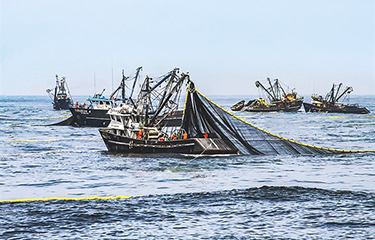Peru’s Ministry of Production (PRODUCE) has announced a 19 May launch date for the first anchovy fishing season of the year in the country's north-central region, setting a total allowable catch (TAC) of 2.792 million metric tons (MT), the ministry reported on its website.
The TAC represents a 36.4 percent boost from last season, when PRODUCE established a 2.047 million MT capture limit. That season closed in January with nearly the full quota caught.
PRODUCE authorized exploratory fishing from 4 May in the maritime area outside five nautical miles of the coastline for two weeks, after which the fishing season will officially start. Authorized vessels must carry out fishing operations outside areas reserved for artisanal and small-scale fishing, according to existing regulations. Operations are only allowed for registered and authorized fishing vessels that have approved satellite monitoring systems (Sisesat) on board, and they must be set to constantly emit satellite-positioning signals.
Peru divides its anchovy fishing areas into two regions – south and north-central – with different capture limits and seasons set for each. The north-central is Peru’s main fishing region, with capture measuring several times that of the south region. The fishery, which targets both Engraulis ringens and Anchoa nasus for use in indirect human consumption – primarily fishmeal and fish oil used in aquaculture production – is the largest by volume in the world.
On 31 December, PRODUCE kicked off the beginning of the anchovy fishing season for the south region, establishing a TAC of 486,500 MT, slated to run until 30 June.
Peru defines the TAC based on observations from the Peruvian Sea Institute (Imarpe), a technical agency within PRODUCE that advises the state on marine conservation issues and that performs studies to evaluate the status of the Peruvian anchovy biomass.
The fishing season will conclude once the maximum total allowable catch limit of the north-central region is reached, or when Imarpe recommends a close due to environmental or biological circumstances.
Photo courtesy of PRODUCE







